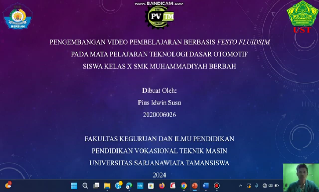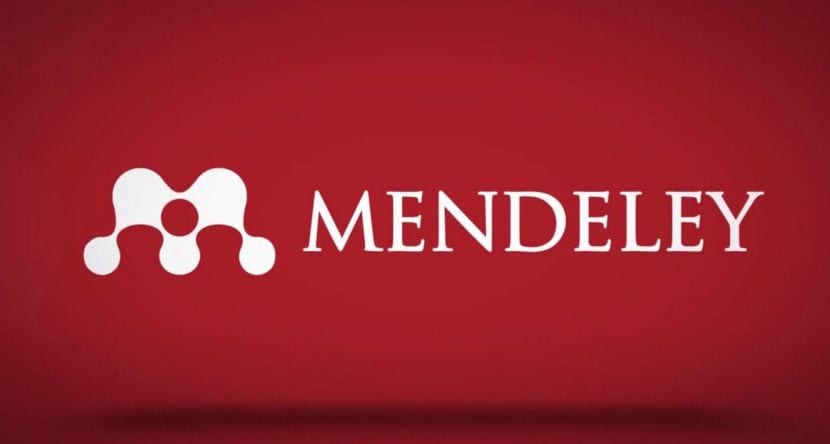Pengembangan Video Pembelajaran Berbasis Festo Fluidsim pada Mata Pelajaran Teknologi Dasar Otomotif Siswa
DOI:
https://doi.org/10.36499/jim.v20i2.12251Keywords:
Pengembangan, Media Pembelajaran, Video Tutorial, Festo Fluidsim, PnumatikAbstract
Penelitian pengembangan ini memiliki tujuan (1) Mengembangkan media pembelajaran interaktif menggunakan aplikasi Festo Fluidsim. (2) Mengetahui Kelayakan Media Pembelajaran Interaktif Menggunakan Aplikasi Festo Fluidsim (3) Untuk mengetahui bagaimana respon siswa di SMK Muhammadiyah Berbah terhadap penggunaan aplikasi Festo Fluidsim sebagai media pembelajaran. Penelitian dan pengembangan (Research and Development) ini mengembangkan media pembelajaran berupa video pembelajaran dan model video tutorial yang digunakan yaitu menggunakan model pengembangan ADDIE yaitu Analysis (analisis), Design (perancangan), Development (pengembangan), Implementation (implementasi), Evaluation (evaluasi). Subjek dalam penelitian terdiri dari Ahli Media, Ahli Materi dan siswa SMK. Instrumen pengumpulan data yang digunakan yaitu berupa angket. Hasil penelitian ini menunjukkan hasil yang layak berdasarkan uji kelayakan oleh ahli media yang mendapatkan skor 80% dan rata-rata skor 4. 0, ahli materi mendapatkan skor 84,25% dan rata-rata skor 4,2, dan respons siswa yang diperoleh dari 2 kelompok kecil dan besar yaitu, Respons siswa kelompok kecil mendapatkan skor 81,67% dan rata-rata skor 4,1, respons siswa kelompok besar mendapatkan skor 83,84% dan rata-rata skor 4,2. Dari data hasil skor tersebut maka media video pembelajaran layak untuk digunakan dalam pembelajaran.
References
Aldoobie, N. (2015). ADDIE Model Analysis phase. American International Journal of Contemporary Research.
Amaliyah, A., & Rahmat, A. (2021). Aam Amaliyah, Azwar Rahmat Attadib: Journal of Elementary Education, Vol. 5 (1), Juni 2021. Journal of Elementary Education.
Bima Oktafyan Putra Gani, Nurcholish Arifin Handoyono, & Sigit Purnomo. (2022). PENGEMBANGAN MEDIA PEMBELAJARAAN FESTO FLUIDSIM PADA MATA PELAJARAN TEKNOLOGI DASAR OTOMOTIF. Steam Engineering, 3(2). https://doi.org/10.37304/jptm.v3i2.4168
Bimantara, E., Purnomo, S., Yudantoko, A., Johan, A. B., Ratnawati, D., & Syafiq, A. (2022). Learning system suspension using e-module in vocational education with model 4D. Taman Vokasi. https://doi.org/10.30738/jtvok.v10i2.13558
Cahyadi, R. A. H. (2019). Pengembangan Bahan Ajar Berbasis Addie Model. Halaqa: Islamic Education Journal. https://doi.org/10.21070/halaqa.v3i1.2124
Forest, E. (2017). ADDIE Model: Instructional Design. Frameworks & Theories.
Handoyono, N. A., & Rabiman. (2019). The Effectiveness of the Problem-Based Learning Model Using Android-Based Learning Application. The 2nd International Conference On Education (ICE) 2019, 1(1). https://doi.org/10.4108/eai.28-9-2019.2291006
Hestiyani, D., Darlius, D., & Syofii, I. (2020). PENGEMBANGAN JOBSHEET PADA MATA KULIAH KERJA BANGKU PADA MATA KULIAH KERJA BANGKU DI PROGRAM STUDI PENDIDIKAN TEKNIK MESIN UNIVERSITAS SRIWIJAYA. Jurnal Pendidikan Teknik Mesin. https://doi.org/10.36706/jptm.v7i1.7085
Hidayat, T., Purnomo, S., Hadi, S., & Setuju. (2022). Analisis Model Pembelajaran untuk Meningkatkan Hasil Belajar Merdeka Belajar Siswa. Seminar Nasional Kependidikan FKIP UST, 1(1).
I. W. K. Wati, dkk. (2020). Media Need Analysis Of Learning Practicum In The Covid-19 Pandemic. J.of Mechanical Engginering Education, 2(5), 128.
Katawazai, R. (2021). Implementing outcome-based education and student-centered learning in Afghan public universities: the current practices and challenges. Heliyon. https://doi.org/10.1016/j.heliyon.2021.e07076
Khaharsyah, A., Purnomo, S., Hadi, S., Djufri, E., & Sudrajat, A. (2023). Pengembangan sistem keamanan sepeda motor berbasis Android dan Arduino sebagai pendukung media belajar. Wiyata Dharma: Jurnal Penelitian Dan Evaluasi Pendidikan, 11(1). https://doi.org/10.30738/wd.v11i1.14613
Kholifah, N., Nurtanto, M., Wachid, N., Majid, A., Suyitno, S., & Rabiman, R. (2020). Acceptance and use of mobile learning in higher education learners’ for vocational learning: A Rasch-based approach. In International Journal of Advanced Science and Technology (Vol. 29, Issue 7).
Kustandi, C., & Darmawan, D. (2020). Kustandi, Cecep, Darmawan, Daddy. (2020). Pengembangan Media. Pembelajaran: Konsep & Aplikasi Pengembangan Media Pembelajaran. In Analisis Standar Pelayanan Minimal Pada Instalasi Rawat Jalan di RSUD Kota Semarang.
Kusuma, W. M., Setuju, & Ratnawati, D. (2019). Development of learning media lathe machining based on animation video. Jurnal Taman Vokasi, 7(1), 54–61. https://doi.org/10.30738/jtv.v7i1.4779
Prapinit, P. (2019). Demand for logistics management studies in North Eastern Thailand. International Journal of Supply Chain Management, 5, 481–485. https://api.elsevier.com/content/abstract/scopus_id/85081614761
Purnomo, S., Pamungkas, T., & Bintoro Johan, A. (2023). Implementation of Android Application-Based Learning Media on Motorcycle Electrical Maintenance Materials in Vocational High Schools VANOS JOURNAL OF MECHANICAL ENGINEERING EDUCATION. Elyas Djufri 172 | VANOS Journal Of Mechanical Engineering Education, 8(2). https://doi.org/http://dx.doi.org/10.30870/vanos.v8i2
Purnomo, S., & Triyono, M. B. (2018). Efektifitas Technopreneurship Dengan Model Pembelajaran Cooperative Learning By Technopreneur For SMK Untuk Siswa Di SMK. TAMAN VOKASI. https://doi.org/10.30738/jtvok.v6i1.2972
Rabiman, R., Nurtanto, M., & Kholifah, N. (2020). ERIC - ED605316 - Design and Development E-Learning System by Learning Management System (LMS) in Vocational Education, Online Submission, 2020-Jan. International Journal of Scientific & Technology Research.
Rabiman, R., Sudira, P., Sofyan, H., & Nurtanto, M. (2021). Practical Learning Media in Subject Maintenance of Chassis and Power (MCP) Based Online: Simple Learning Using Videos on YouTube. International Journal of Interactive Mobile Technologies. https://doi.org/10.3991/ijim.v15i03.14943
Ratnawati, D., Mustafa Kusuma, W., Setuju, S., Nurtanto, M., & Widodo, W. (2020). Development of Job Sheet Lathe Machining Practice Based on Animation Video as Interactive Learning Media. Journal of Physics: Conference Series, 1573(1). https://doi.org/10.1088/1742-6596/1573/1/012005
Ratnawati, D., Purnomo, S., Handoyono, N. A., Subagyo, & Suyitno. (2020). Automatization of fog lamp based on LED sensor and photo dioda. Journal of Physics: Conference Series. https://doi.org/10.1088/1742-6596/1700/1/012055
Sari, B. K. (2017). Desain Pembelajaran Model ADDIE dan Impelentasinya dengan Teknik Jigsaw. Prosiding Seminar Nasional Pendidikan : Tema “Desain Pembelajaran Di Era ASEAN Economic Community (AEC) Untuk Pendidikan Indonesia Berkemajuan", 87–102.
Sudaryono, Elmanda, V., Purba, A. E., Ayu Sanjaya, Y. P., & Julianingsih, D. (2022). Efektivitas Program Magang Siswa SMK di Kota Serang Dengan Menggunakan Metode CIPP di Era Adaptasi New Normal Pandemi Covid-19. ADI Bisnis Digital Interdisiplin Jurnal, 3(1). https://doi.org/10.34306/abdi.v3i1.565
Sugiyono. (2015). Metode Penelitian dan Pengembangan Reasearch and Developement. Alfabeta.
Sugiyono. (2016). Metode Penelitian Kuantitatif, Kualitatif, Dan R&D (23rd ed.). Alfabeta, Bandung.
Umaroh, S. T., Soeryanto, S., Warju, W., & Muslim, S. (2022). Peningkatan Kualitas Proses dan Prestasi Belajar Siswa SMK Teknik Otomotif dengan Blended Learning di Masa Pandemi Covid-19. EDUKATIF : JURNAL ILMU PENDIDIKAN. https://doi.org/10.31004/edukatif.v4i1.2068
Wahyuni, D., Sari, M., & Hurriyah. (2020). Efektifitas e-Modul Berbasis Problem Solving Terhadap Keterampilan Berfikir Kritis Perserta Didik. Natural Science: Jurnal Penelitian Bidang IPA Dan Pendidikan IPA.

Downloads
Published
How to Cite
Issue
Section
License

This work is licensed under a Creative Commons Attribution 4.0 International License.
Authors who publish with this journal agree to the following terms:
The journal allow the authors to hold the copyright without restrictions and allow the authors to retain publishing rights without restrictions.
Authors retain copyright and grant the journal right of first publication with the work simultaneously licensed under a Creative Commons Attribution License that allows others to share the work with an acknowledgement of the work's authorship and initial publication in this journal.
Authors are able to enter into separate, additional contractual arrangements for the non-exclusive distribution of the journal's published version of the work (e.g., post it to an institutional repository or publish it in a book), with an acknowledgement of its initial publication in this journal.
Authors are permitted and encouraged to post their work online (e.g., in institutional repositories or on their website) prior to and during the submission process, as it can lead to productive exchanges, as well as earlier and greater citation of published work (See The Effect of Open Access).

This work is licensed under a Creative Commons Attribution 4.0 International License.








